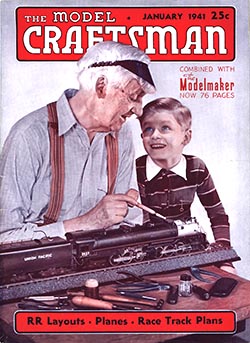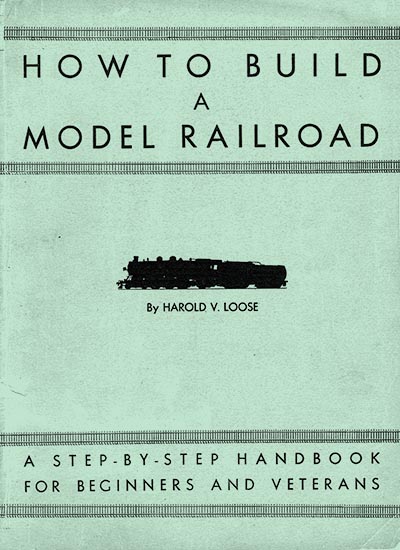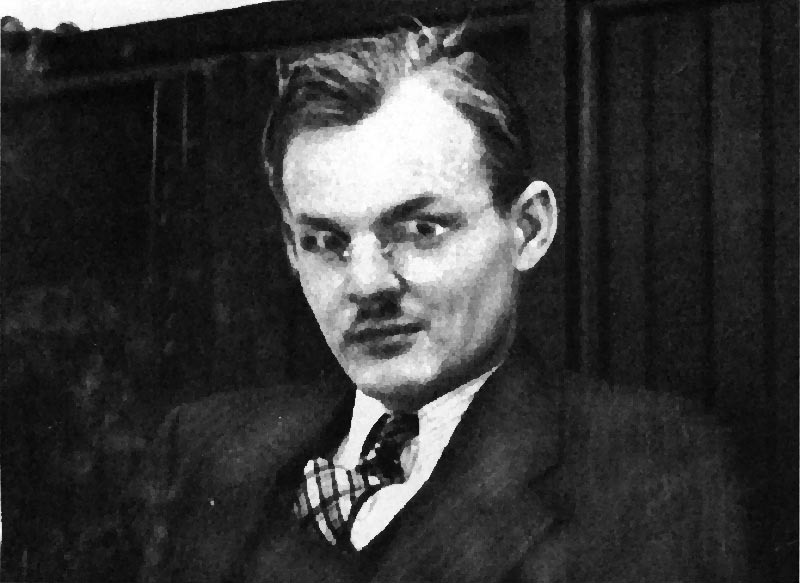 With the passing of Harold Loose, the model building fraternity has lost one of its best friends and most brilliant contributors. No one personality has ever given so abundantly or so intelligently as he did to the model hobbies that he loved so dearly. His thoughts, his inspirations, and his pride of achievement were ever in the interests of model building, which was both his chosen work and avocation. Few of his many friends realized that he was so young, for in the 27 years granted to him he accomplished much more than do the great majority of men in a lifetime.
With the passing of Harold Loose, the model building fraternity has lost one of its best friends and most brilliant contributors. No one personality has ever given so abundantly or so intelligently as he did to the model hobbies that he loved so dearly. His thoughts, his inspirations, and his pride of achievement were ever in the interests of model building, which was both his chosen work and avocation. Few of his many friends realized that he was so young, for in the 27 years granted to him he accomplished much more than do the great majority of men in a lifetime.
This magazine has long cherished the compliment that prompted Harold to submit his first manuscript to us for publication. Shortly after this, he became a member of our editorial staff, and thereafter he rapidly advanced to the position of Editor. Soon after this, the editor of one of the great mechanical magazines was impressed with this young man’s ability and pursuaded him to ply his talents in a broader field covered by that publication. In a little more than a year, however, he was back with us in his old job, writing about the things he liked best.
With all his many duties as an editor and writer, he found time to write three books on mode railroading, all of which were best sellers. Probably no other books have outsold his because of his sympathetic understanding of his fellow modelers’ problems and his ability to write authoritatively in simple language.
 Nothing pleased him more than to take the problem of a reader home to his own workshop and write an article as he solved the puzzle. He delighted in these accomplishments, and he had the gift of passing his information on to his readers in an entertainingly explicit style. Another thing that endeared him to his readers was the enthusiasm with which he entered into correspondence with them on subjects of model building. He wrote letters regularly to model builders all over the world, most of whom he was never able to meet personally. But they were bonded together in friendships through their mutual interests in what Harold recognized as a great hobby.
Nothing pleased him more than to take the problem of a reader home to his own workshop and write an article as he solved the puzzle. He delighted in these accomplishments, and he had the gift of passing his information on to his readers in an entertainingly explicit style. Another thing that endeared him to his readers was the enthusiasm with which he entered into correspondence with them on subjects of model building. He wrote letters regularly to model builders all over the world, most of whom he was never able to meet personally. But they were bonded together in friendships through their mutual interests in what Harold recognized as a great hobby.
Of his purpose and accomplishment, his friend, the Rev. William F. Sunday (of the Lutheran Church of the Good Shepherd in Brooklyn, N.Y.), had this to say at the last rites: “He encouraged ever person to select a hobby and to work and play at it. In one sense he was a prophet of the new world, for he knew that to the new man technological knowledge will be as much a part of the subconscious mind as is the multiplication table of ours. He believed in the wholesome coordination of the spirit with the new scientific discoveries and that by using both in a productive endeavor a man could achieve joy, personal satisfaction, and peace. I cannot recall that Harold Loose ever use the pages of his magazines to encourage the building of models of anything that could be used to destroy. He made a definite contribution to his age, and his deeply personal editorials will be missed by those who have found encouragement and inspiration.”
As we read Rev. Sunday’s reference to Harold’s editorials, we cannot help recalling the editorials appearing at the outbreak of the current European war. He was able to forsee the curtailment the war would put on activities of the hobbyists across the Atlantic, and, with his writing, he displayed keen regret. He was not writing to an audience of strangers, for many craftsman — especially among the English miniature railroaders — knew him well through his articles and books. The curtailment of a hobby was, to Harold, a tragedy. He knew and believed that a model hobby is a great deal more than a mere pastime, and his desire was that a hobby should be within the reach of all.
We are thankful that Harold passed on without suffering. While his illness had been of more than a year’s duration, he and his friends believed he had nearly reached a state of recovery. But, on the night of November 14, 1940, he went to sleep at his home in Brooklyn, N.Y., to remain at peace. Harold’s mother and brother Norman join us in thanking his many friends for their kind letters of sympathy.



